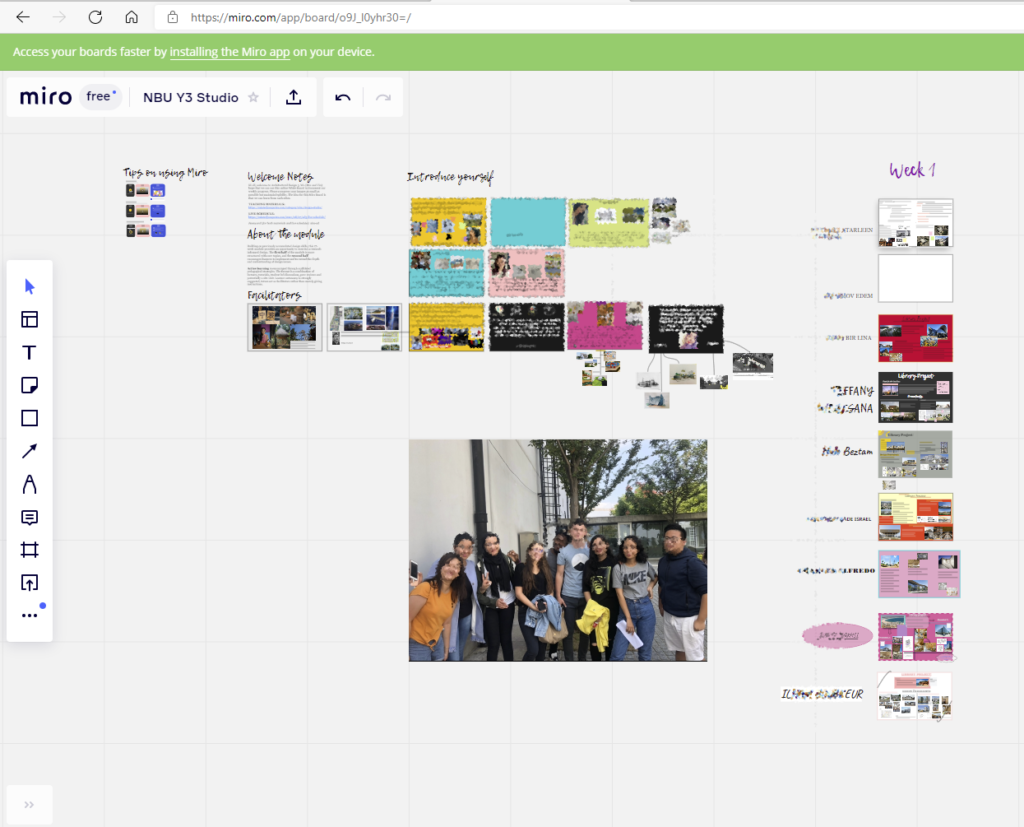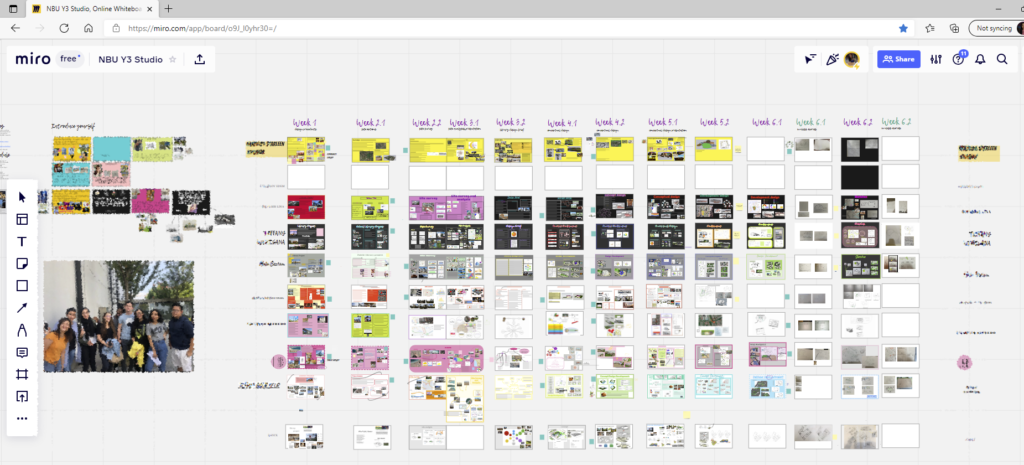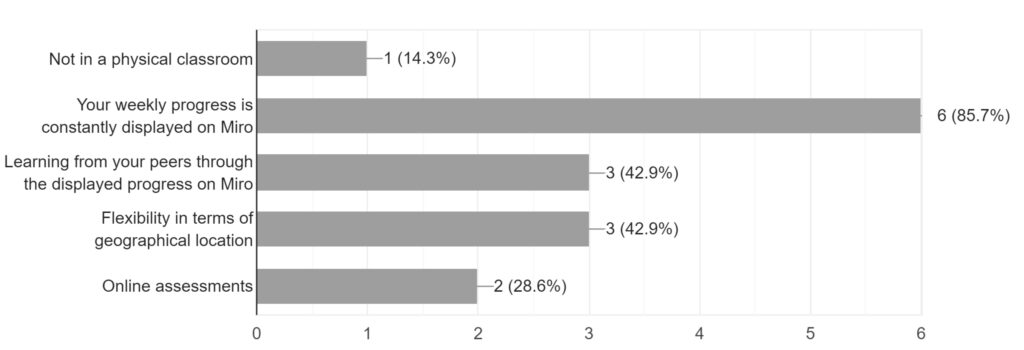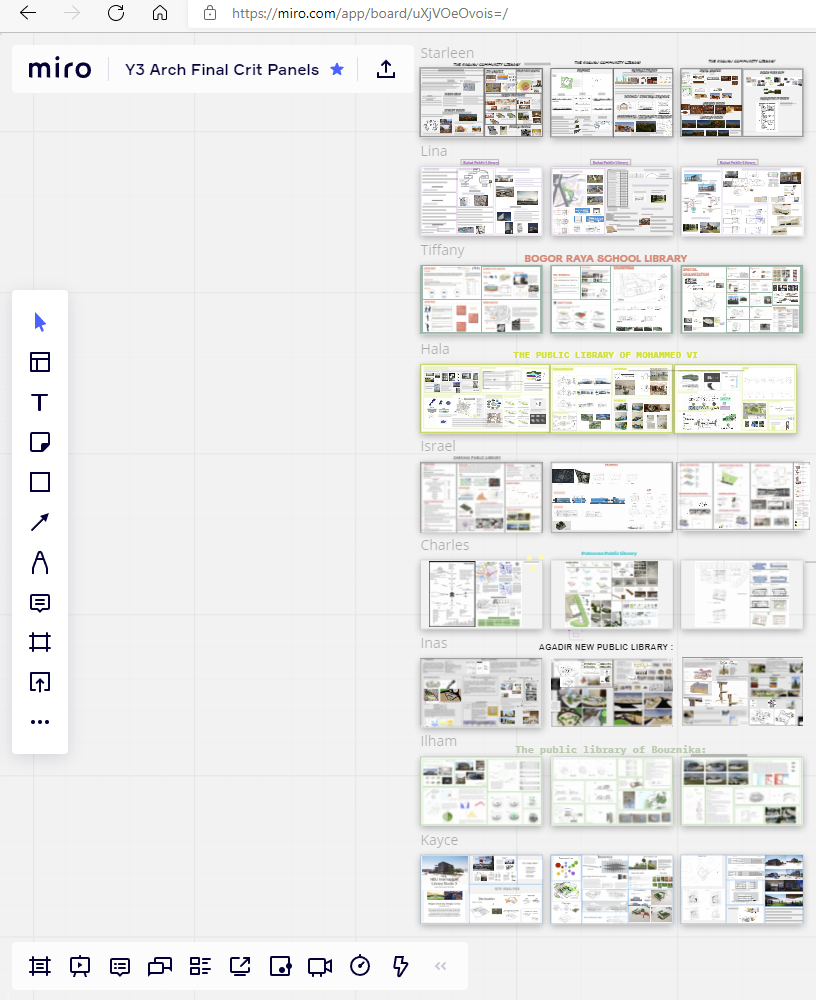This write-up is a reflection on the Architectural Design 3 studio module in Ningbo University in the first semester of the 2021-2022 academic year, focuses on the use of Miro software in the architectural studio setting as an alternative to face-to-face (F2F, henceforth) learning. The sample size is small with a 77% response rate (7 students). Nonetheless, it is hoped that this initial observation shows students’ voice and concerns with the use of Miro. This blog only shows the Miro-related survey which was part of the end of semester student survey of 24 questions.
A bit of background, the module was co-taught by Fin and myself. The international program in Ningbo University has been online from February 2020 due to the fact that most of the students are still abroad. Last semester (September-December 2021) we adapted Miro for the first time. The learners confirmed that none of them had prior experience with Miro in question #17.
At the beginning of the semester Miro was also used to get to know each other through the ‘Introduce Yourself’ area. Tutors and learners had their designated boxes to showcase their passions etc. It was hoped to create a conducive online learning community, especially between tutors and learners as we did not know each other before this module. The design brief was to design a library.



It is commonly understood that in architectural pedagogy, face-to-face studio setting is irreplaceable. The online learning provision cannot mimic the usual studio setting; however it offers a unique experience in comparison to F2F. These unique experiences are the point of departure of this observation, giving rise to the potential to incorporate the observed benefit to the existing F2F learning for future flexible learning purposes. Overall, the learners rated the synchronous online learning, using a combination of Miro and a video conversation platform DingTalk as a positive experience, see Figure 3. In addition, the online learning community is considerably well rated too, see Figure 4.

Figure 5 shows the general acceptance of Miro, however this also shows that it cannot replace the F2F experience. From Figure 6 the constant (twice a week) display was rated positively by the learners (85.7%), I found this interesting as this capability is less likely to occur in a regular F2F. Usually learners get to see their friends’ work in the studio setting but not to this extent of all of their progress. 42% of the students also pointed out that it facilitates the peer learning exercise.


On the last survey (question #24), learners were asked to leave feedback on Miro use. They criticised that Miro could be slow to load at times. It is usually due to the number of images, learners’ internet connection and using the free version of Miro. This situation was mitigated by splitting the whole semester journey to three Miro boards. The first board (Figure 2) displayed Week 1-6 progress, the second board displayed Week 7-13 progress and the third board was exclusively for the final assessment (final crit, see Figure 7). There was a conflicting view on the use of Miro with regards to panel layout. One student mentioned that it saved time instead of making panels using design software such as Photoshop/AI, however another learner preferred to use the design software. Perhaps this was not illustrated clearly- in the future, it is best to highlight to learners that they can still do layout in design software and upload them as images into Miro.
During the final crit (Figure 7), the facilitators decided to combine a live presentation and a pre-recorded one. This would minimise the technical and internet problems. The live session served as a summary of the final work, and pre-recorded presentations were used to expand the design in more detail.

To sum up, although the use of Miro was generally well accepted, there is room for improvement. Referring to the aim of this blog to identify the potential use of Miro to complement future F2F learning, some identified advantages are: 1) the constant display of progress was beneficial for tutors and learners, 2) minimising the need for panel lay outing, and 3) Miro can also be used to facilitate assessment in F2F and flexible learning environments. It is also observed by the author that making sketches during tutorials on Miro is as convenient as on paper-and-pen, co-sketching during tutorials with learners can also be achieved and documented.
Link to the final student work and the AR experience:
https://miatedjosaputro.com/2021/12/27/ad3-end-of-semester-online-portfolio/
